New York City has the most beautiful parks, especially the many recent developments that have popped up all along the waterfronts across the five boroughs. These accessible escapes are peaceful, picturesque and wonderful destinations to spend the day relaxing, picnicking, playing and so much more.
This post will focus on the lower west side of Manhattan where one can spend an entire afternoon taking a closer look at public art, visiting memorials, popping into museums and reveling in the breathtaking views of the Hudson River and at the Statue of Liberty from the southern most tip of Manhattan and all that is Battery Park City running up along the waterfront of the lower west side. This is an ideal way to spend the day for locals and tourists looking for a little adventure and eager to learn more about this city’s history.
Everything listed in today’s post is possible to do in one afternoon at a leisurely pace or broken up into multiple days to allow more time to visit the museums along the way; in either case comfortable shoes are a must. This downtown adventure is mainly free, as there is no admission fee to the majority of the historic sites and scenic locations listed, of course, should you choose to go into into any of the mentioned museums, admission fees, and possibly reservations, are required for entry.
This walk will highlight the following: African Burial Ground National Monument, City Hall Park, 9/11 Memorial and Museum, World Trade Center Oculus, National Museum of the American Indian and Battery Park City.
African Burial Ground National Monument
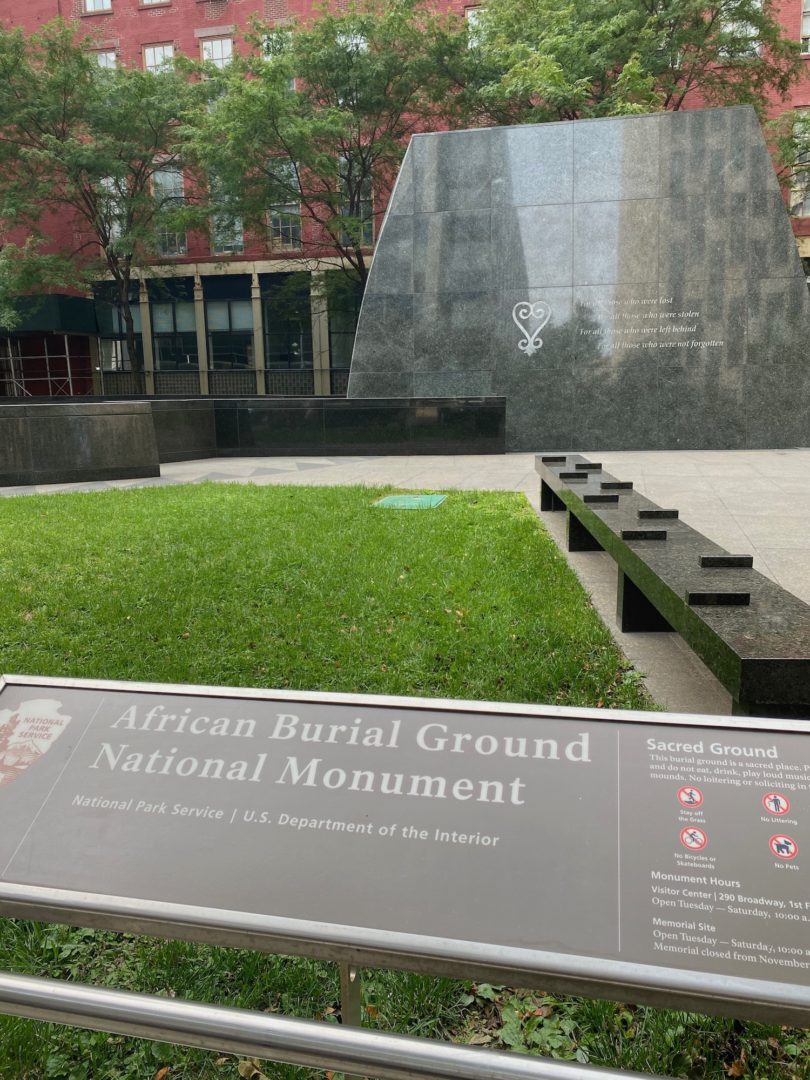
The African Burial Ground marks the location of a cemetery where 15,000 enslaved and free Africans were buried from the mid-1630s through 1795. This colonial-era cemetery was discovered in the 1990s and turned out to be one of the earliest and largest of its kind. This burial ground was discovered when the federal government had broken ground for a new building on this plot of land. These plans were scrapped and this space was turned into a memorial that, in my opinion, is overlooked.
This educational site is honors the African slaves who built this city. New York had the most enslaved Africans of any other colony/state in the North. The process of emancipation was initiated in 1799 and even though New York was the first state to abolish slavery, the law that would eventually free all slaves in New York was not passed until March 31, 1817. Slave-owners were given a ten-year grace period to comply and July 4, 1827 was designated as the final date of emancipation.
The African Burial Ground National Monument visitor center is located at 290 Broadway, between Duane and Reade Streets and the memorial is located on the corner of Duane Street and African Burial Ground Way (Elk Street). I visited this site when the visitor center was closed to the public due to Covid but according to the National Parks Service website, the center has reopened to the public. No tickets or reservations are required.
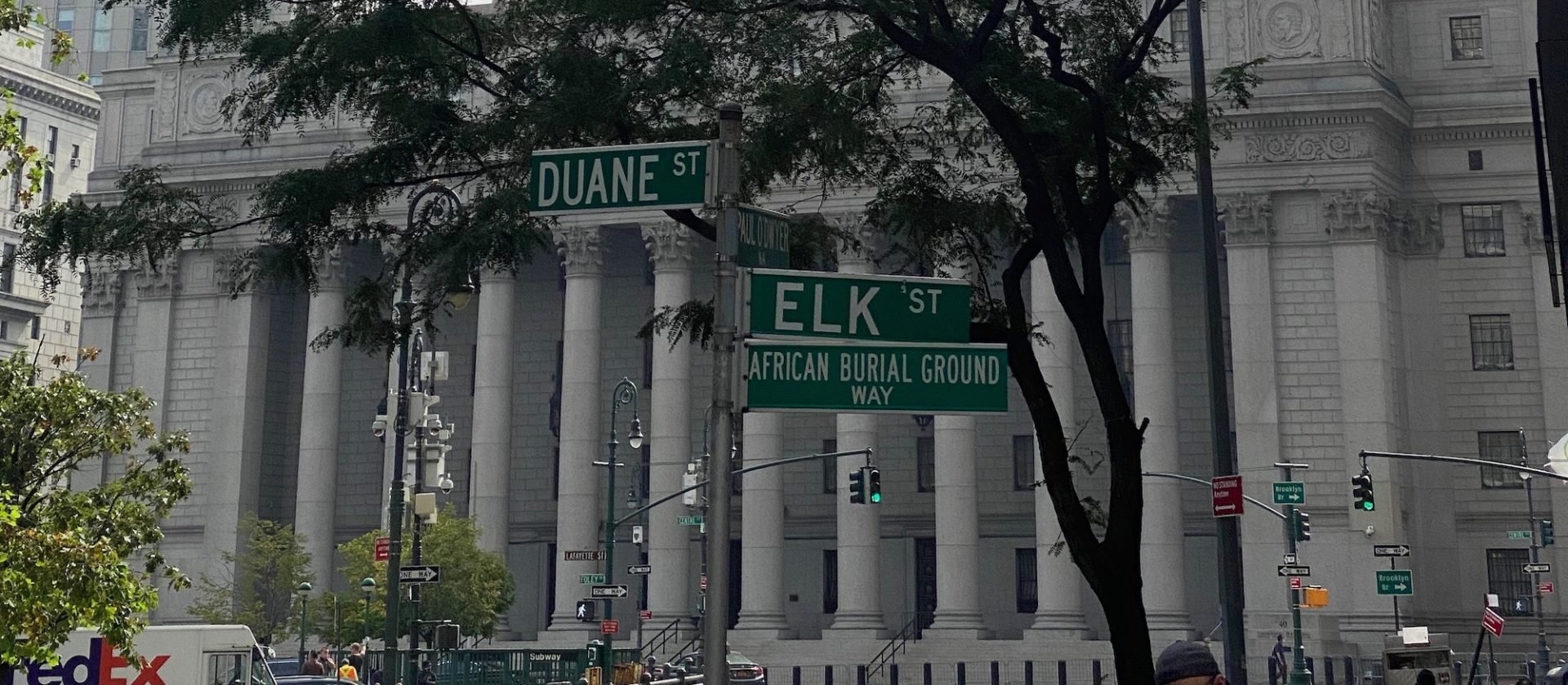
Melvin Edwards, Brighter Days, City Hall Park
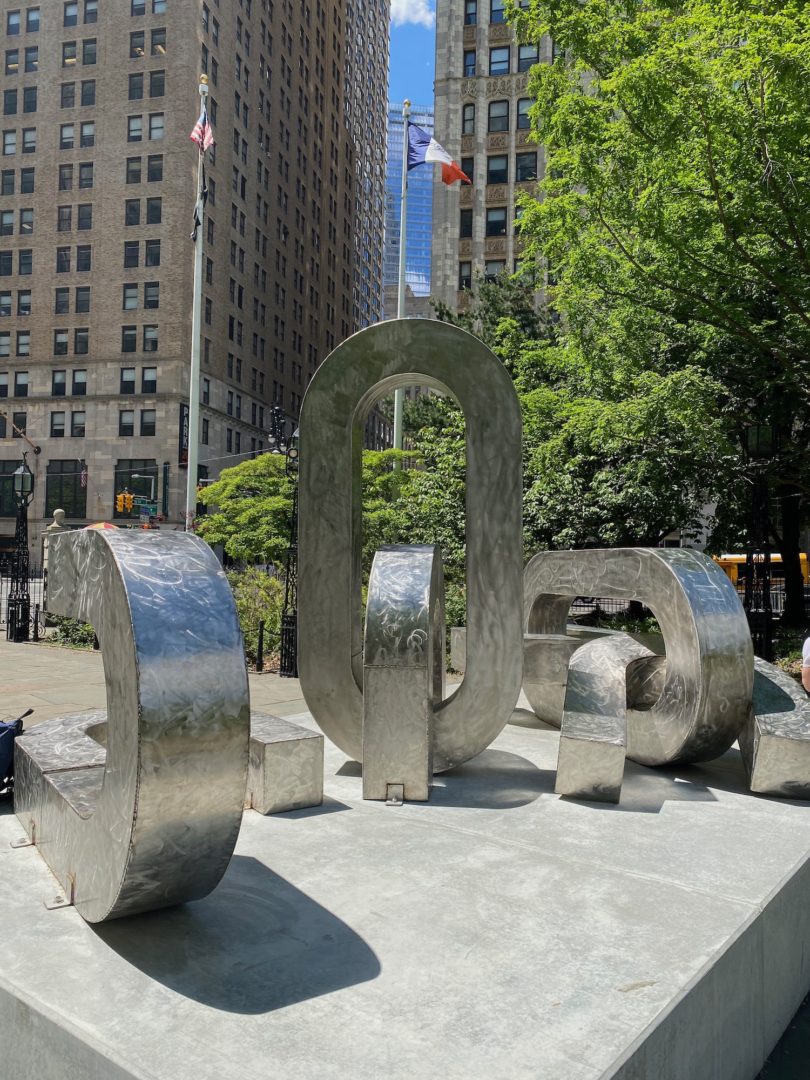
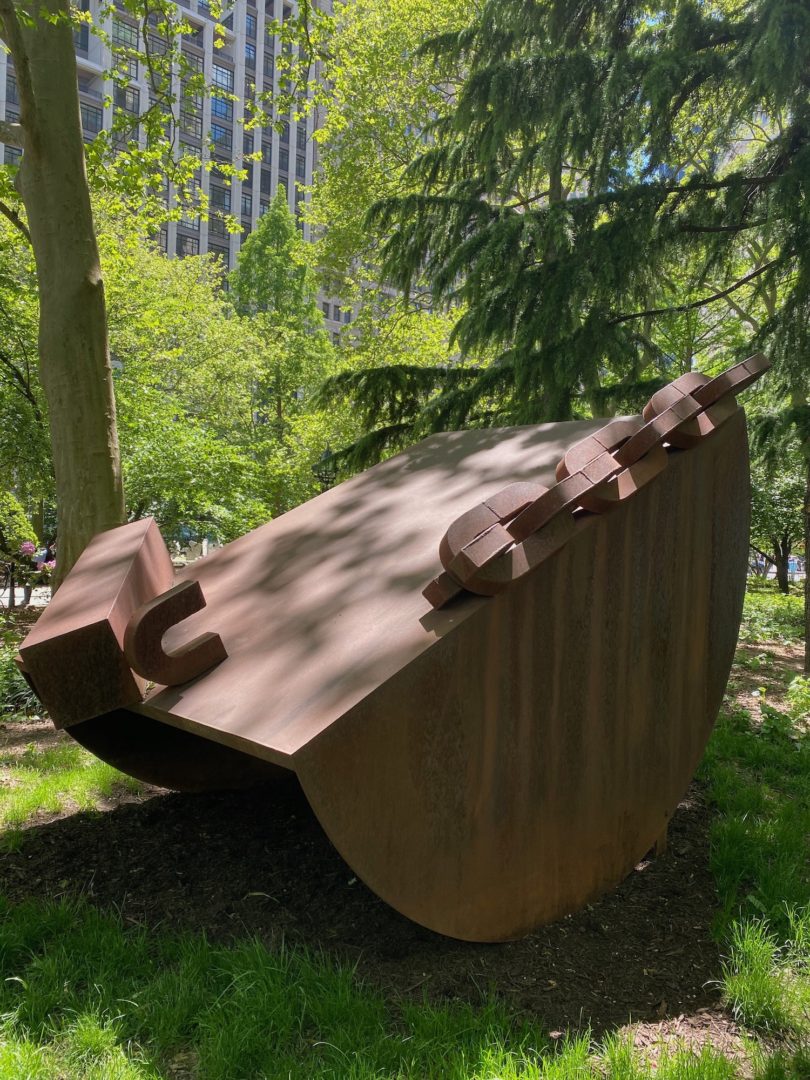
The next stop is just a few short blocks away to the southern lawn of City Hall Park. In this space, the Public Art Fund recently opened a retrospective of outdoor sculptures by the artist Melvin Edwards (closes November 28, 2021). Melvin Edwards (b. 1937, Houston, TX) is best known for abstract sculptures that employ chains, barbwire, nails and other industrial forms exploring the brutal history of slavery and the African diaspora. The installation of six monumental sculptures, with City Hall looming in the background, within walking distance to the African Burial Ground and one of the locations where Black Lives Matter protests took place, resonates with this nation’s turbulent history – past and present. This exhibition is a triumphant retrospective for a world-renown artist and former professor at the Mason Gross School of Rutgers University back in 1990s. I had the good fortune of taking one his classes while an undergraduate student at Rutgers.
9/11 Memorial & The Oculus
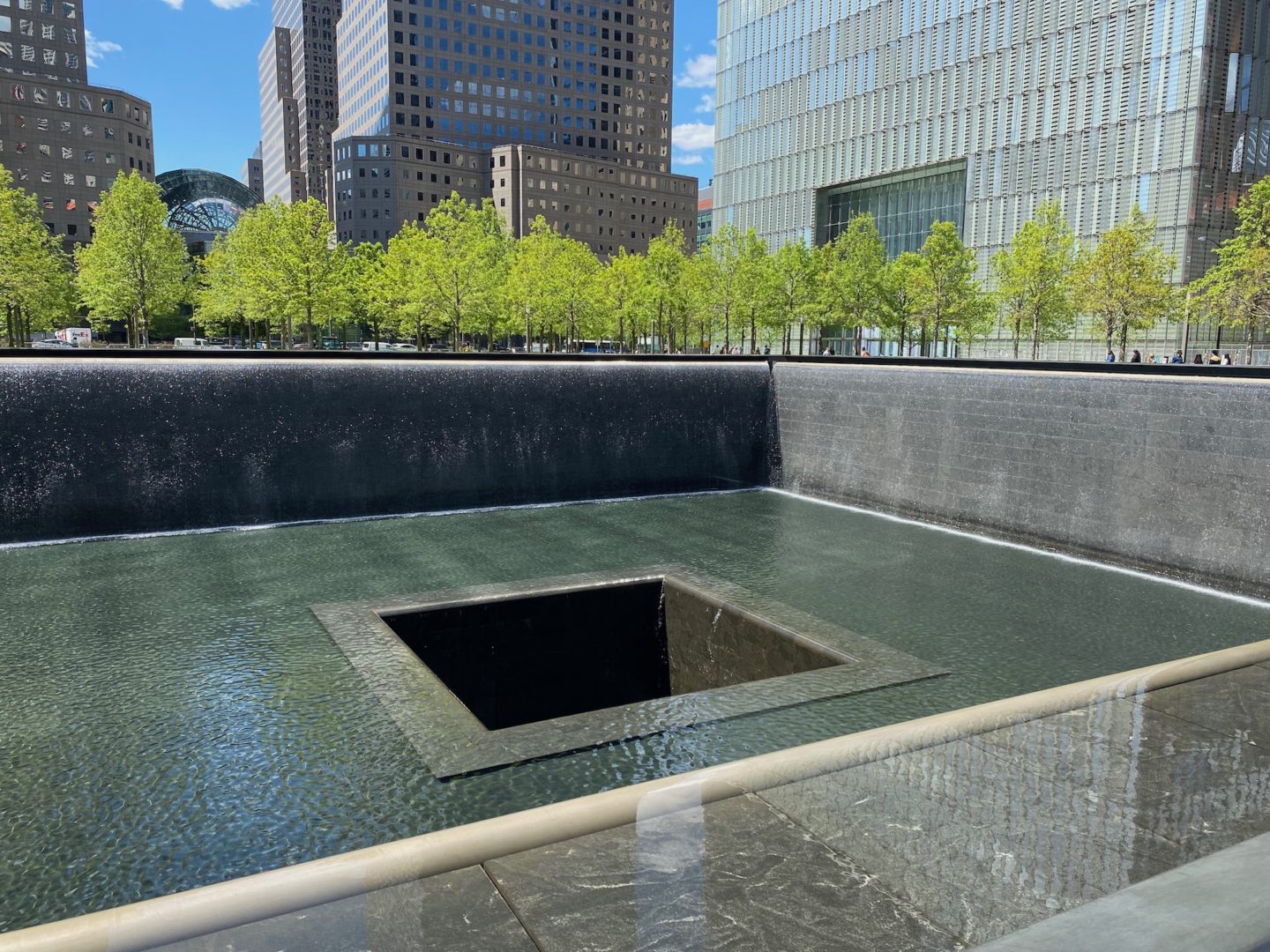
It is unbelievable that it has been nearly 20 years since the tragic events of September 11, 2001. Just a few blocks west of City Hall Park is the 9/11 Memorial & Museum and One World Trade Center (Freedom Tower). There are no lines and tickets are not required to access the outdoor memorial. In place of the destruction that was Ground Zero is deep reflecting pool with waterfalls that stream into a deeper void. This is a place of reflection where one can pay their respects to the victims whose names are inscribed around the perimeter.
The memorial is adjacent to the museum and just steps away from One World Trade Center where one can choose to take a walk through the museum, take an elevator to the observation deck of new tower or both. On our recent day trip, we did not go into either building because I wanted to make sure he had time and energy to make our way through this somewhat ambitious itinerary. I will eventually visit the museum but am not sure about the observation deck due to a lifelong fear of heights. I prefer to look up at the soaring skyscrapers of this city with my feet firmly on the ground. But that’s just me.
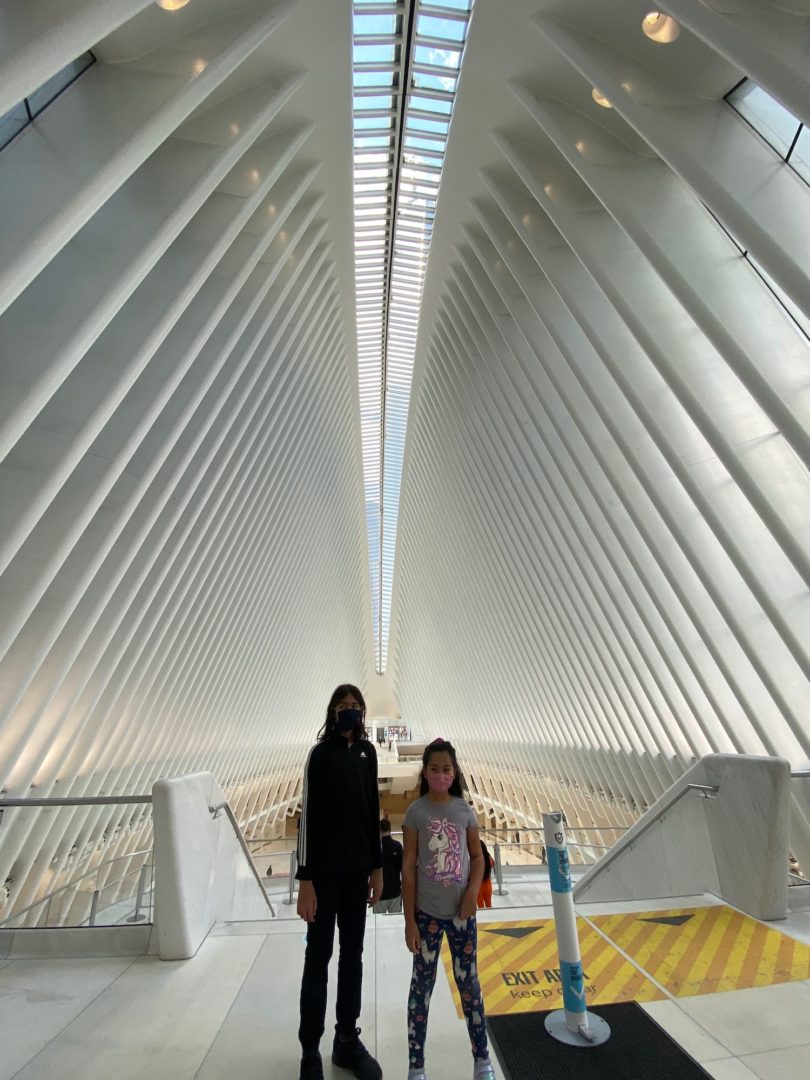
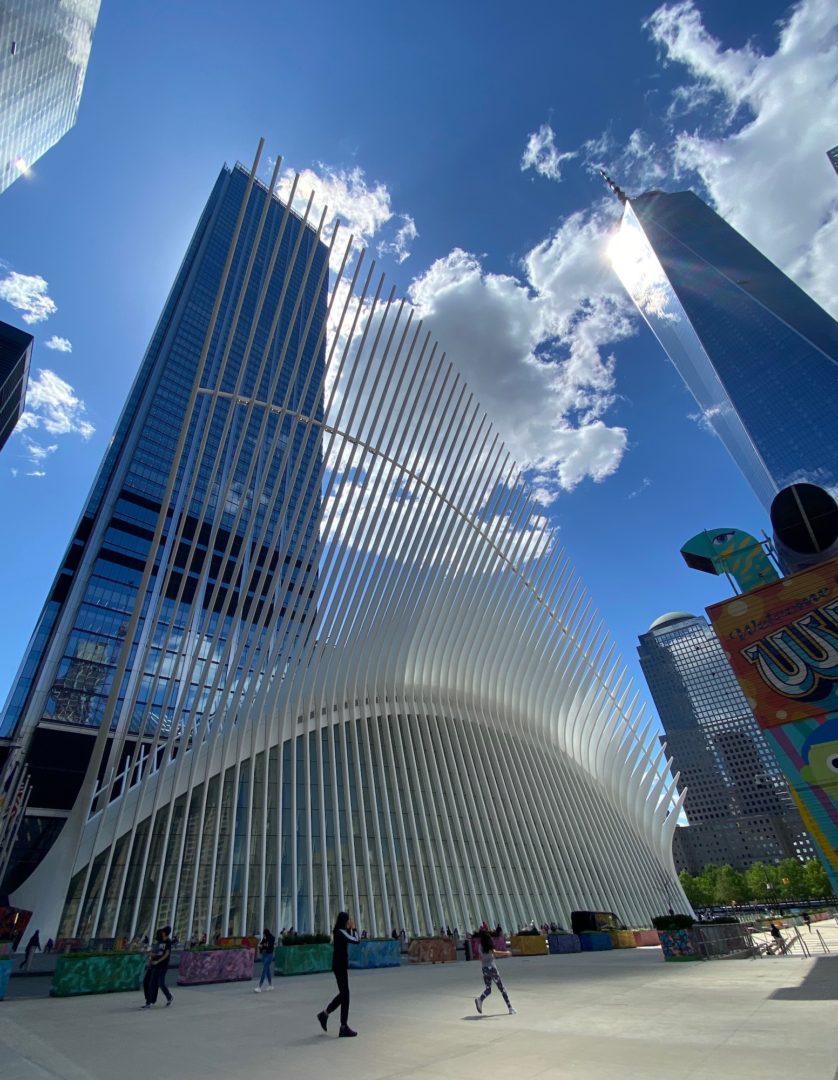
Also in the vicinity of the the memorial and museum is the World Trade Center Oculus, designed by the architect Santiago Calatrava. This new building that houses a shopping center, subway station, PATH station and clean bathrooms open to the public, must be admired from inside and out. This daring design reminds me of an inverted Gothic cathedral, with spires extending outward, instead of inward, and reaching overhead into the deep blue sky that is a work of art unto itself. This 21st century construction also feels prehistoric, like that of a dinosaur’s skeleton.
The space around the outside of the Oculus is a welcoming plaza without outdoor spots to eat, space for the kids to burn off energy and magnificent views of the surrounding buildings. As you make your way down to the southern most tip of Manhattan, you can pass by Zuccotti Park where the Occupy Wall Street protests took place and further along past the iconic Charging Bull of Wall Street (the symbol of the financial institutions opposed by the Occupy Wall Street movement).
National Museum of the American Indian
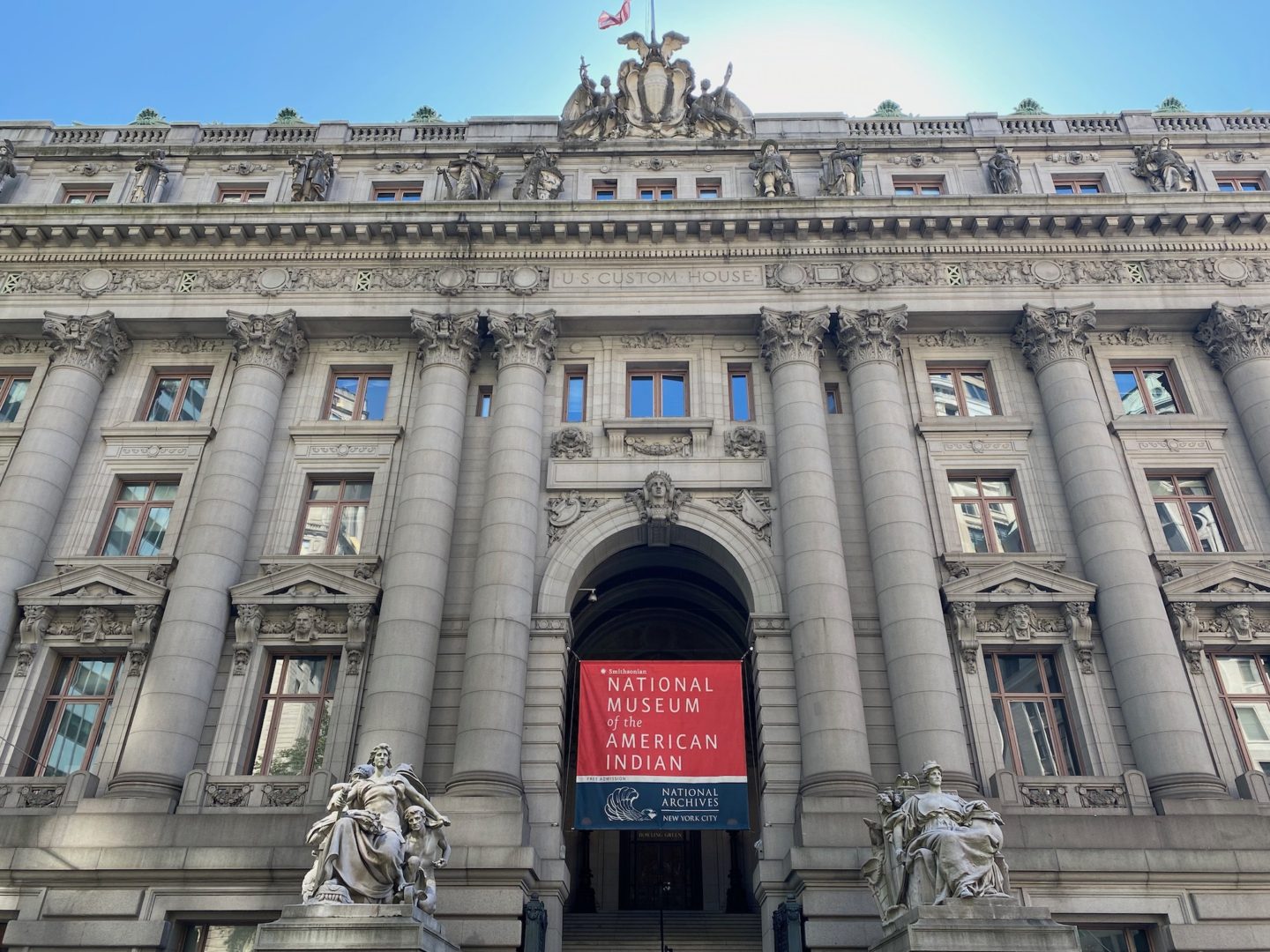
After you pass the bull, you will find yourself facing the National Museum of the American Indian. Admission is free to all and stop inside is certainly worth the time.
Battery Park City
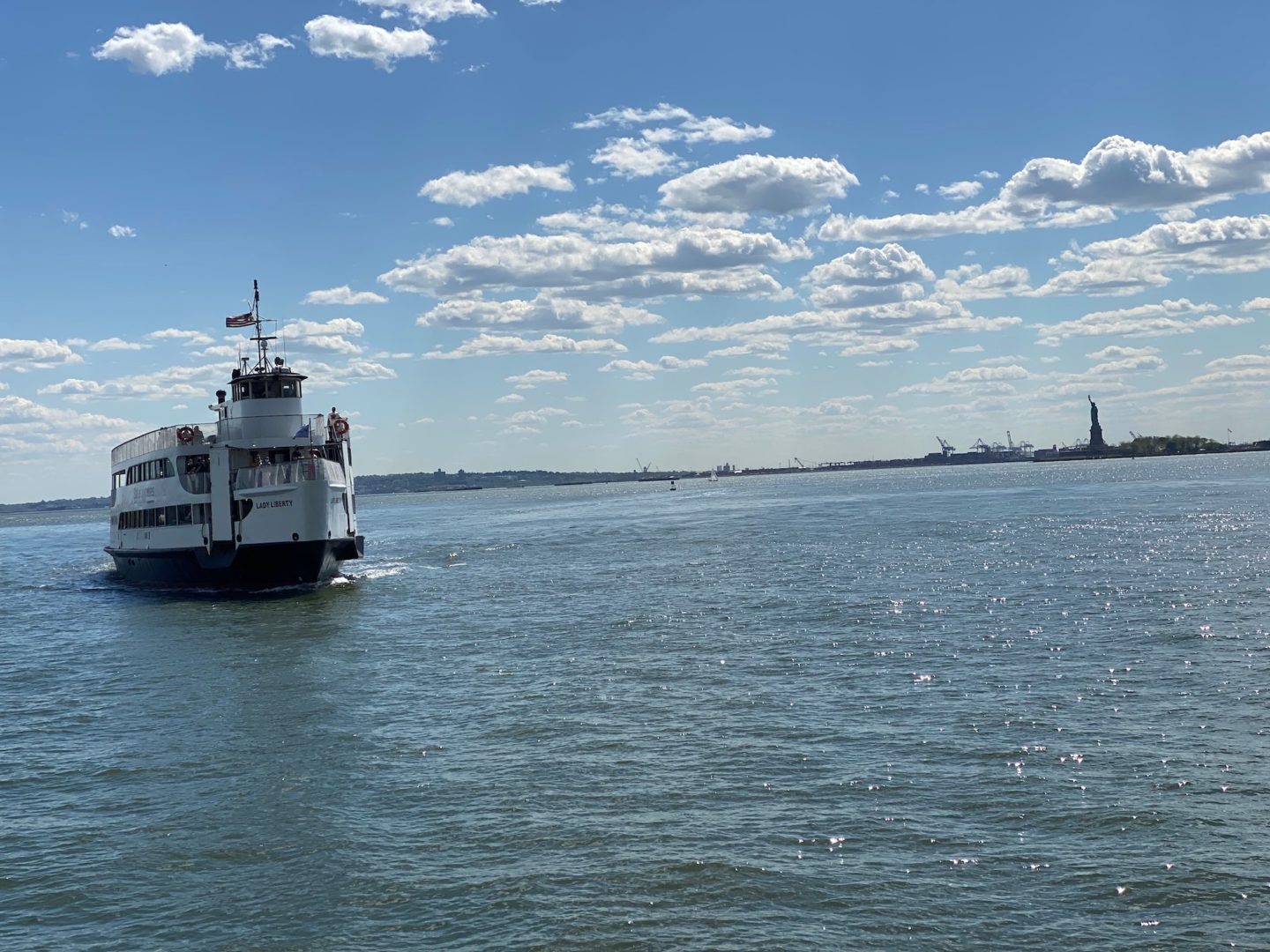
Just beyond the National Museum of the American Indian is the entrance to Battery Park City at the very bottom of Manhattan with views of the Hudson River, the Statue of Liberty, Ellis Island, Governors Island and New Jersey. If you are with little kids, make the SeaGlass Carousel your first stop. Make sure to check the carousel’s website because the days that it is open changes throughout the year.
Battery Park City is a beautifully developed waterfront with plenty of public art, memorials, dining options and a playground, extending from the bottom of the island and up along its lower west side and just steps away from Tribeca and all this neighborhood has to offer. As you you make your way north along the water, do not miss the Mother Cabrini Memorial, a recent addition that honors the Italian heritage of this city but also prominently features a female figure. Further up is The Upper Room by Ned Smyth, a charming pavilion of mosaic columns and game board tables ready for chess and checker enthusiasts. I almost forgot that I was walking in New York City when I entered this pavilion and was mesmerized by architectural forms reminiscent of ancient sites in Northern Africa or the Near East. This is just one of many mini-escapes for locals that does not require a passport or credit card, just imagination.
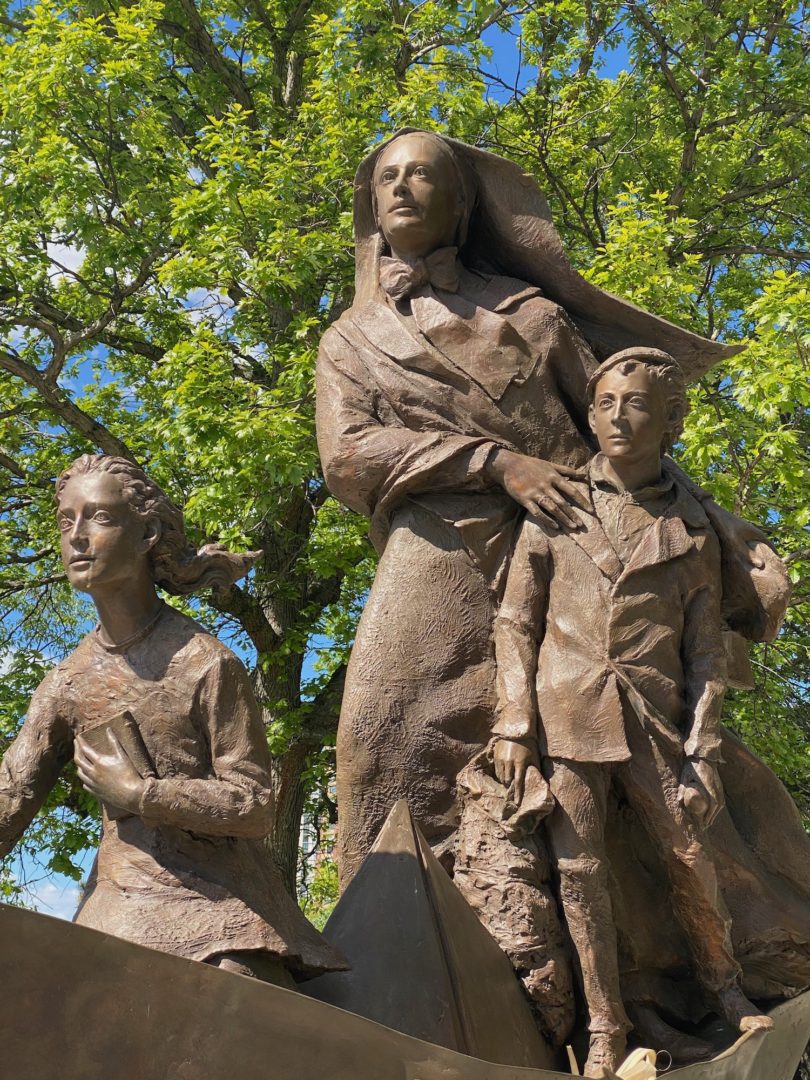
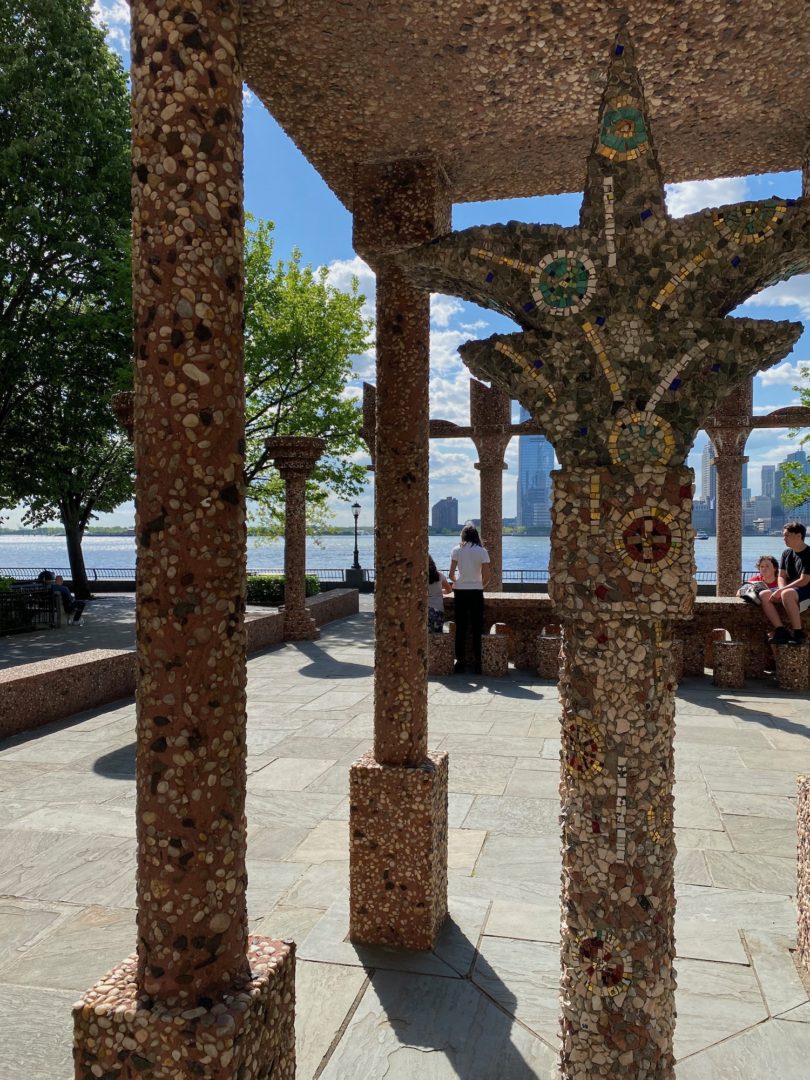
Continue to be dazzled by Batter Park City as you walk past more art: the Pylons by Martin Puryear and The House That Will Not Pass For Any Color Than Its Own by Mildred Howard. These public artworks are very close to Brookfield Place, where there are numerous dining and shopping options. If you continue your journey along the waterfront of Battery Park City, which I highly recommend, you will come upon a playground where those with kids can take a break while the kids explore.
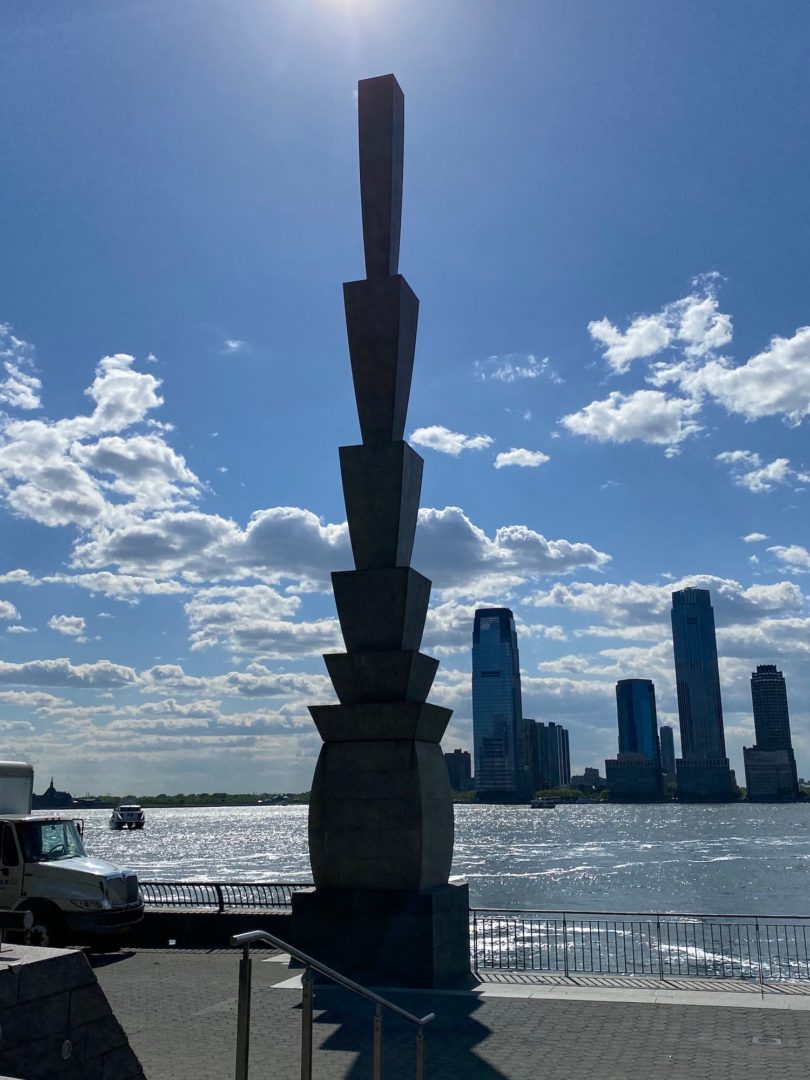
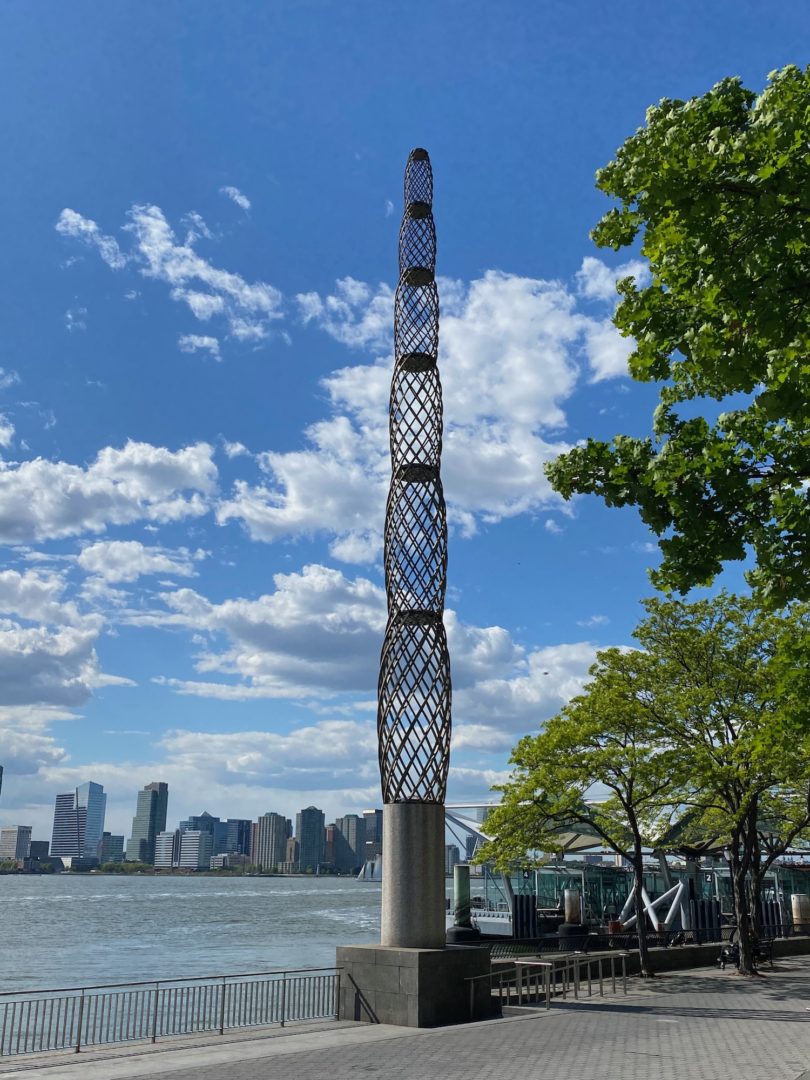

Next to the playground is the Irish Hunger Memorial that was designed by the artist Brian Tolle in memory of those who perished during the famine of 1845-52 but also intended to raise awareness about world-wide hunger. No tickets or reservation are required for this multi-sensory experience that appears to be open to the public anytime. Visitors first walk through a tunnel where the walls are covered in text and the sound of a person speaking is heard from overhead speakers, then into a Famine-era cottage that was donated to the Memorial by relatives of the artist who arranged for the transfer of this structure from Ireland to New York, and up through a path that takes you to lush green space that is evocative of the Irish landscape but also treats one to yet another stunning view of the New York harbor from Battery Park City.
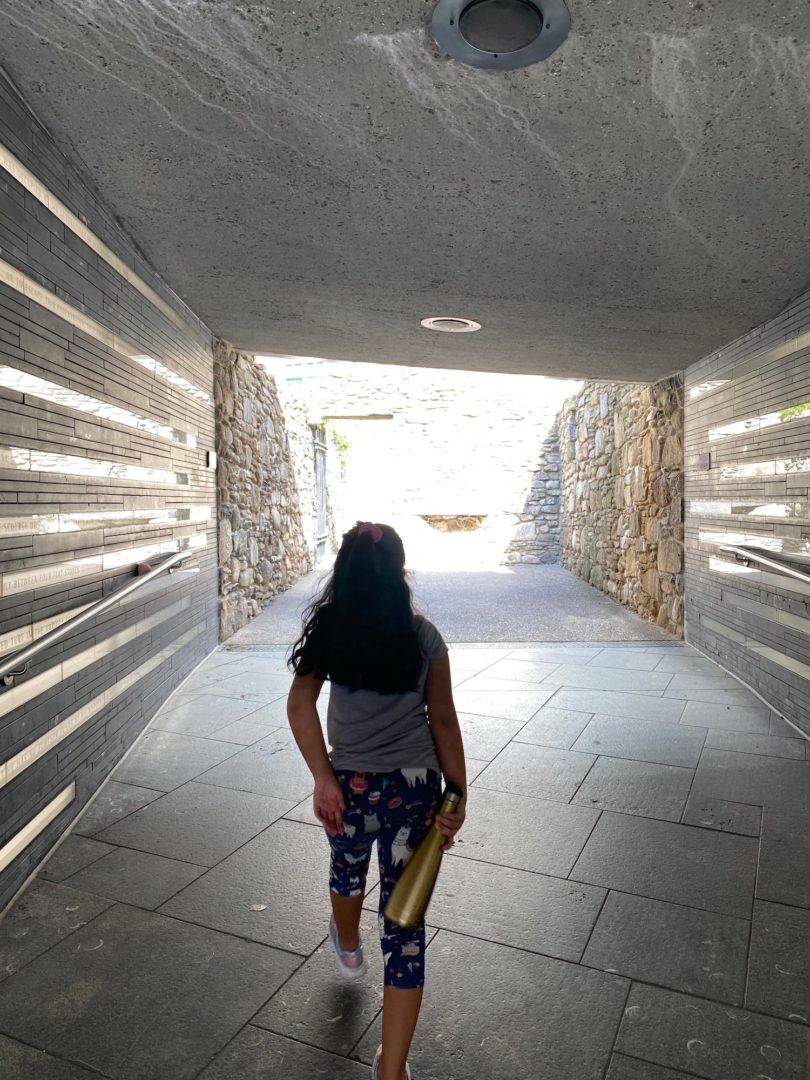
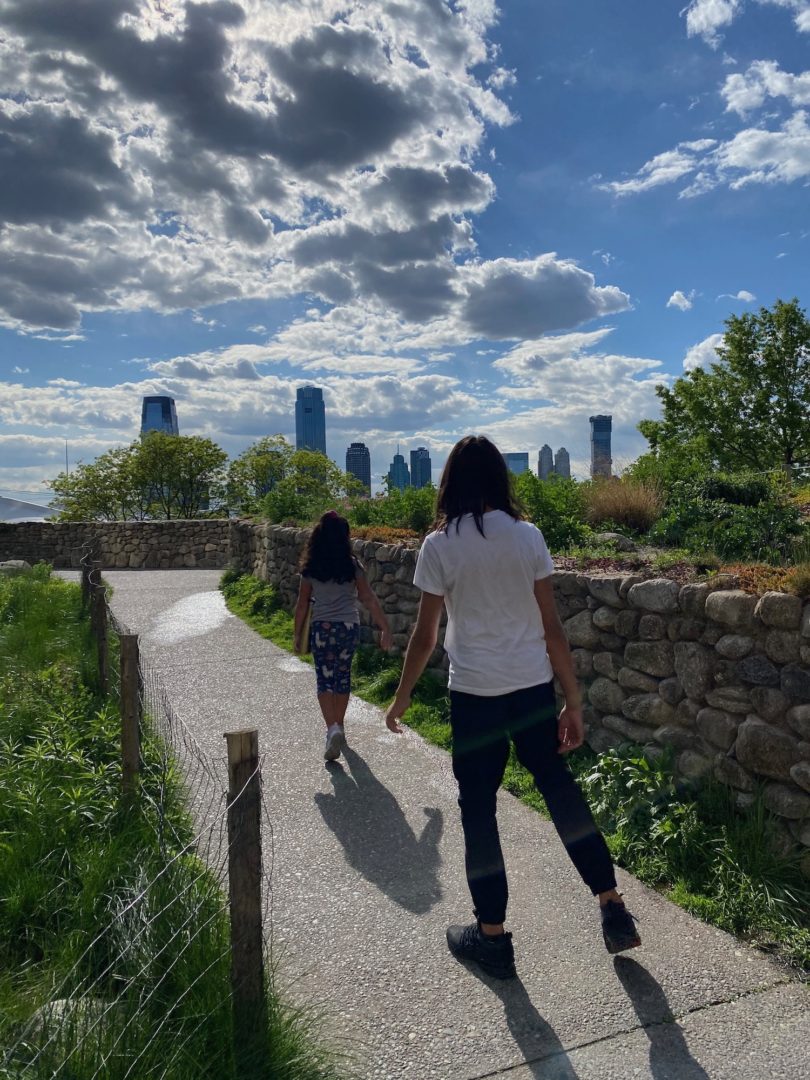
You can continue to walk north and explore the remainder of Battery Park City but if you full of energy and want to keep moving, just above this park are Piers 25 and 26. These piers are also recent developments that offer more opportunities for outdoor fun complete with a playground and plenty of places to sit and enjoy the view. You can end you day with a glass of wine or more at City Vineyard on Pier 26 or venture into Tribeca where there are plenty of places to choose from not mention art galleries worth popping in and out of, but that’s for another post….
For more posts about art around New York City and abroad click here.
For more about family travel, local (NYC) and abroad, click here.
Click here if you are looking for a little guidance planning your next vacation.





